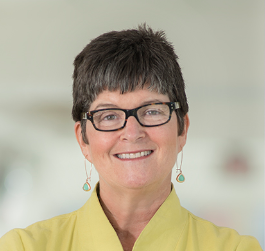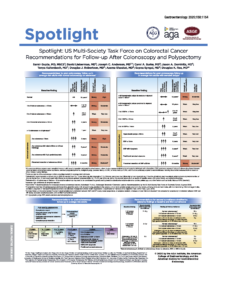
Recent progress and innovations in colonoscopic procedures prompted the United States Multi-Society Task Force on Colorectal Cancer (MSTF) to reevaluate their recommendations on how to approach surveillance in patients who undergo colonoscopy or polypectomy, according to Carol A. Burke MD, AGAF, FACG, FASGE, FACP, staff gastroenterologist, Cleveland Clinic Department of Gastroenterology, Hepatology and Nutrition.
Dr. Burke spoke with DDW News on what clinicians need to know about the updated guidelines, released in February 2020, and how they might impact clinical practice.
DDW: What prompted the update to the 2012 MSTF guidelines for follow-up after colonoscopy and polypectomy?
Dr. Burke: The 2012 recommendations considered adenoma histology, size and number (1–2 versus 3 or more), and serrated polyp histology and size to inform the interval for post-polypectomy colonoscopy. Since then, there has been progress in at least three areas that prompted a reassessment of the guidelines:
1. The efficacy of colonoscopy has been improved. Endoscopists are achieving and surpassing established colonoscopy quality benchmarks such as adenoma detection rate and identifying sessile serrated polyps.
2. Innovations in colonoscopic electronic imaging. Our ability to detect lesions with the widespread use of high-definition scopes has greatly improved.
3. New data on the risk of metachronous advanced neoplasia. A plethora of studies have demonstrated a contemporary risk of metachronous advanced neoplasia in subsets of patients with polyps is lower than previously reported and is particularly low for individuals who have one or two small tubular adenomas.
 DDW: How do the 2020 MSTF guidelines differ from the 2012 guidelines?
DDW: How do the 2020 MSTF guidelines differ from the 2012 guidelines?
Dr. Burke: There are three main differences:
1. The time for post-polypectomy surveillance interval was increased from 5–10 years to 7–10 years in individuals with 1–2, < 10 mm tubular adenomas based on new data.
2. New intervals were added stratifying patients based on the number of <10-mm conventional adenomas and sessile serrated polyps. Many of the intervals were lengthened.
3. Specifying that high-quality colonoscopy underlies the allowance of the newly recommended post-polypectomy intervals.
The new recommendations are a little more nuanced, which may make them harder to remember. I keep a copy of the “spotlight” poster in the endoscopy suite and in my office for reference when I am sending results to patients and setting their next colonoscopy interval.
The MSTF also provides recommendations for the second post-polypectomy surveillance colonoscopy, stratified by adenoma features at baseline and at the first follow-up colonoscopy.
DDW: How do you expect the new guidelines will impact patient care and management?
Dr. Burke: I believe the biggest opportunity and challenge will be the approach to advising patients who were told their next exam was in 5–10 years that new data and guidance suggest they can safely wait 7–10 years after their last colonoscopy. Creating that messaging for patients by providers and office staff is key.
Additionally, the logistics to offer the lengthened recall interval to patients will need to be created. The MSTF recognizes that this may not be practical in all practices. However, many patients in my practice welcome this lengthened interval and the new data supporting the safety of the longer interval.
Some clinicians ask me how to determine who gets the 7–year versus the 10–year interval. For that, I offer the shorter interval for those at higher risk, such as smokers, patients who are overweight or living with obesity, those who do not exercise or eat according to CDC guidelines, or those who have a family history of colorectal cancer in a single first-degree relative over the age of 60.
Dr. Burke will give the oral presentation, “Interpreting the new surveillance guidelines: Less is more” on Saturday, May 21, at 10 a.m. PDT as part of the session “Principles and Pearls of Polyp Resection.”



